Last updated on
Discover the ideal placement for a fire extinguisher in your kitchen to ensure maximum safety and quick access during emergencies.
The kitchen is undoubtedly the heart of every home. It’s where we cook our meals, share stories with family and friends, and create memories that last a lifetime.
However, as much as we love spending time in the kitchen, it’s also one of the most dangerous areas in our homes when it comes to fire hazards. That’s why having a fire extinguisher in your kitchen is crucial for keeping yourself and your loved ones safe.
But where exactly should you put it? In this article, we’ll explore the best places to put a fire extinguisher in your kitchen so you can be prepared for any unexpected emergencies that may arise while cooking up a storm.
Key takeaways:
- Fire extinguisher should be easily accessible and visible at all times.
- Kitchen fire extinguishers should be Class K or ABC-rated.
- Different types of fires require different types of extinguishers.
- NFPA recommends placing extinguisher within 30 feet of cooking equipment.
- Mount extinguisher near stove or cooktop, but not too close.
What's Inside
Importance of Fire Extinguisher in Kitchen
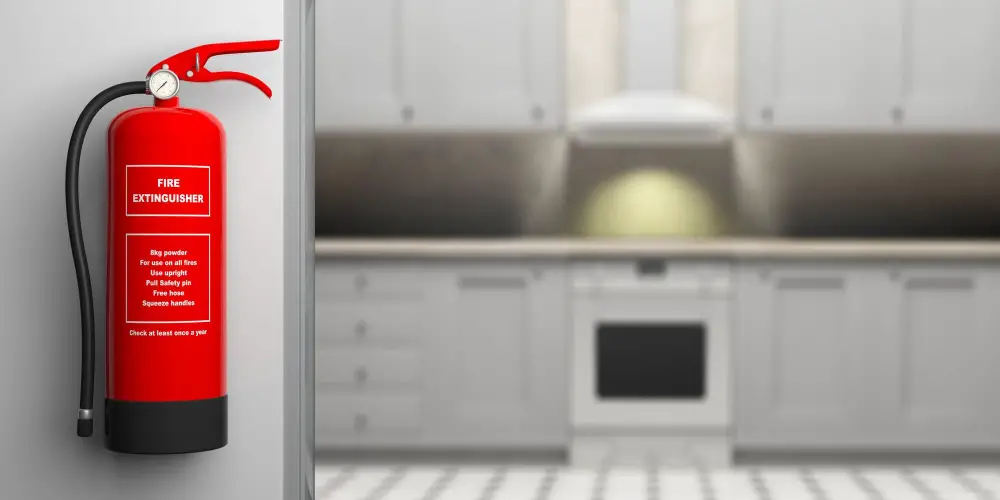
The kitchen is one of the most common areas in a home where fires can start. Cooking appliances, electrical equipment, and flammable materials such as oils and grease are all potential fire hazards that can quickly escalate into dangerous situations.
That’s why having a fire extinguisher in your kitchen is essential for keeping yourself and your loved ones safe.
A fire extinguisher is an active firefighting device that helps to control small fires before they become uncontrollable infernos. It works by releasing chemicals or other agents onto the flames to suppress them quickly.
In case of a sudden outbreak of flames while cooking, you don’t want to be running around looking for an extinguisher; it should be within reach at all times. The importance of having one cannot be overstated – it could mean the difference between minor damage or total destruction.
It’s important not only to have a fire extinguisher but also know how to use it properly when needed.
Types of Fire Extinguishers for Kitchen Use
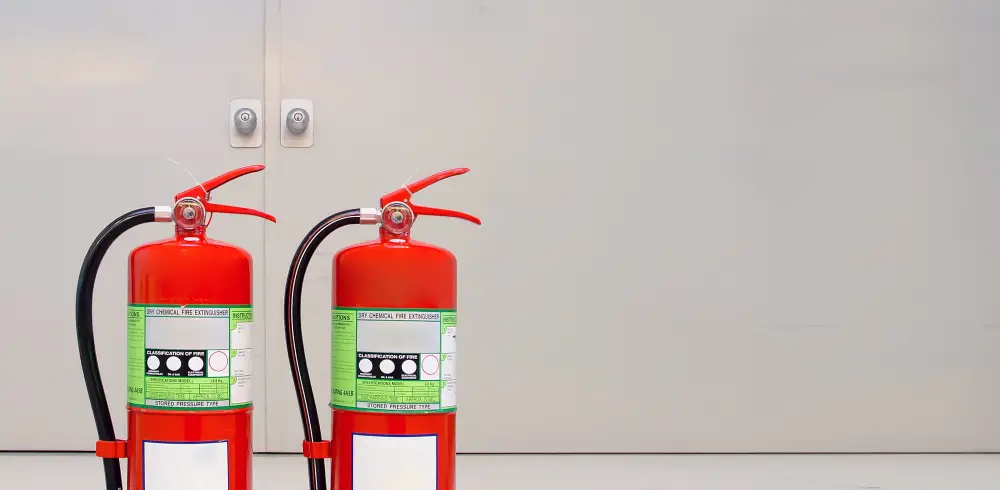
The most common types of fire extinguishers used in kitchens are Class K and ABC-rated models.
Class K fire extinguishers are specifically designed for use on fires involving cooking oils, greases, and fats. These types of fires burn at extremely high temperatures and require a special agent that can cool down the flames while also creating a barrier between the fuel source (oil) and oxygen.
ABC-rated fire extinguishers are multipurpose devices suitable for putting out different kinds of fires such as those caused by paper or wood (Class A), flammable liquids like gasoline or oil-based paints (Class B), electrical equipment like appliances or wiring (Class C). While they may not be as effective in fighting Class K kitchen fires compared to specialized units, having an ABC-rated model is still better than having no means of defense against other potential hazards in your home.
It’s important to note that using the wrong type of fire extinguisher on certain types of flames could make matters worse instead.
Fire Extinguisher Types and Ratings
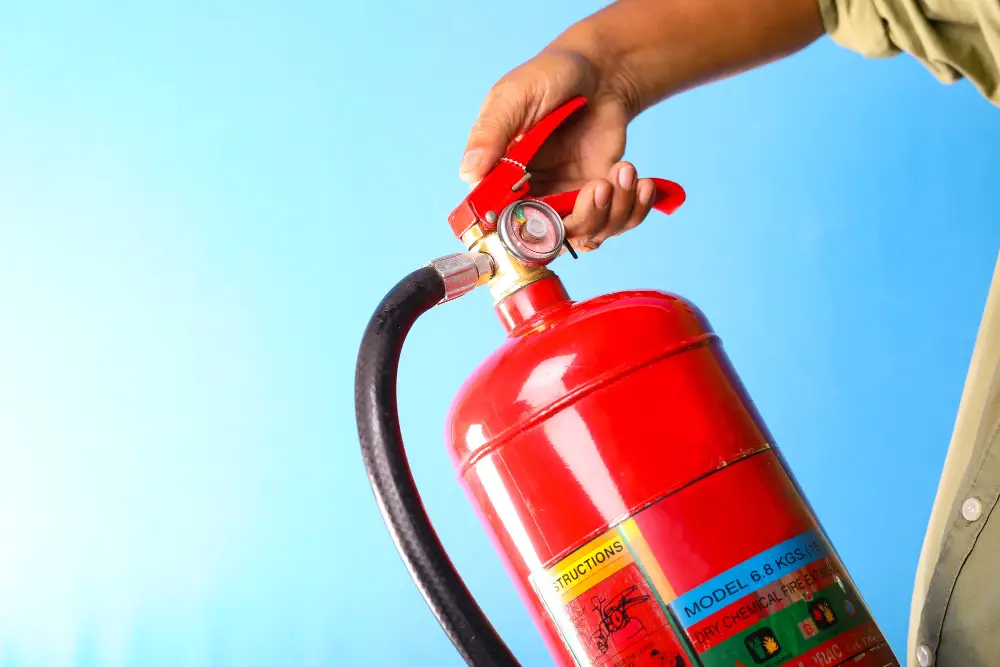
Different types of fires require different types of extinguishers, and each type has its own rating system. The most common types of fire extinguishers for kitchen use are Class A, B, and C.
Class A: This type is designed to put out fires that involve ordinary combustibles such as wood or paper.
Class B: This type is used for flammable liquids like gasoline or oil-based paints.
Class C: This type is meant for electrical fires caused by appliances or wiring in your kitchen.
Each class also has a numerical rating that indicates the amount of fire the extinguisher can handle. For example, an ABC-rated 2A-10BC means it can handle a Class A fire up to 2 square feet in size and a Class B/C up to 10 square feet in size.
NFPA Fire Extinguisher Location Requirements
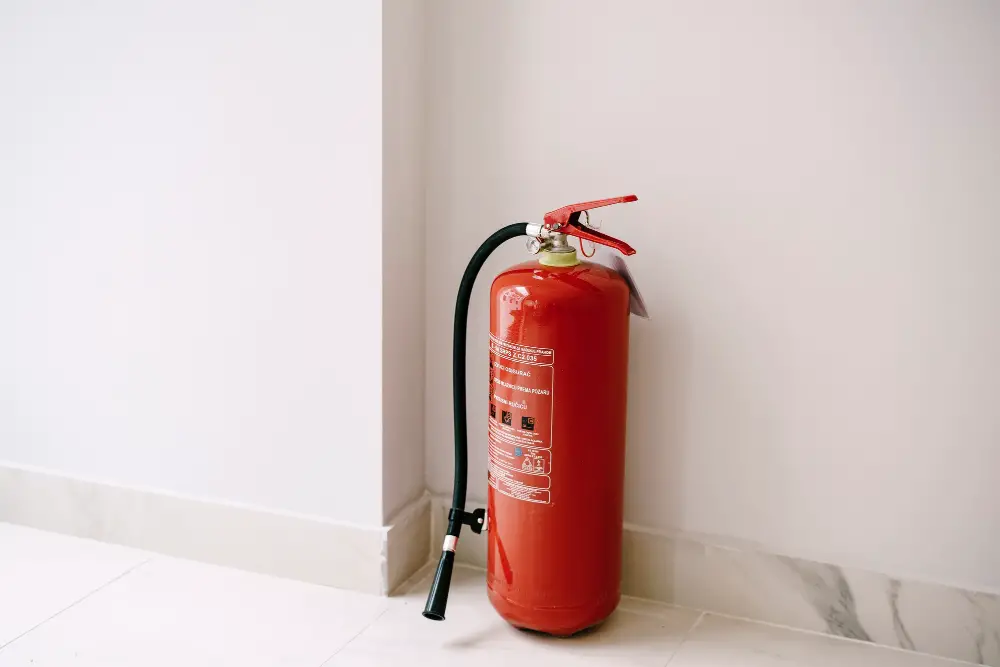
These guidelines are designed to ensure that fire extinguishers are easily accessible and visible during emergencies.
According to NFPA 10, a fire extinguisher should be located within 30 feet of any cooking equipment that can produce grease or oil fires. This means that if you have a stove or oven in your kitchen, you need to have a fire extinguisher nearby.
The NFPA recommends placing fire extinguishers near exits so they can be accessed quickly and safely during an emergency. It’s also important to make sure that the location is free from obstructions such as furniture or appliances.
Best Locations to Place Fire Extinguisher in Kitchen
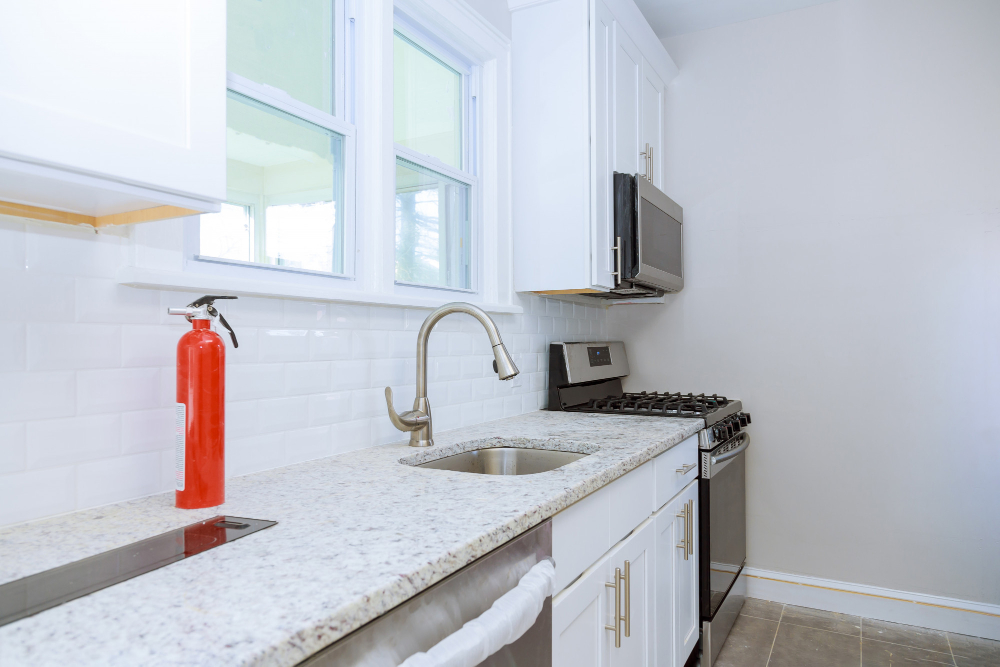
The first thing you should keep in mind is that the extinguisher needs to be easily accessible and visible at all times. You don’t want to have to search for it when an emergency arises.
One of the best locations for a fire extinguisher in your kitchen is near the stove or cooktop. This makes sense since most fires start on or around cooking appliances.
If possible, mount the fire extinguisher on a wall close enough so that you can reach it quickly but not too close where heat from cooking could damage its contents.
Another great location for a fire extinguisher is near any electrical equipment such as microwaves, blenders, and other small appliances that may cause sparks or short circuits leading up-to-fire hazards.
It’s also important not just only place one but multiple Fire Extinguishers throughout your home especially if there are multiple floors with kitchens present like basement kitchens etc., this will ensure maximum safety coverage during emergencies regardless of which floor they occur on.
Proximity to Cooking Appliances and Heat Sources
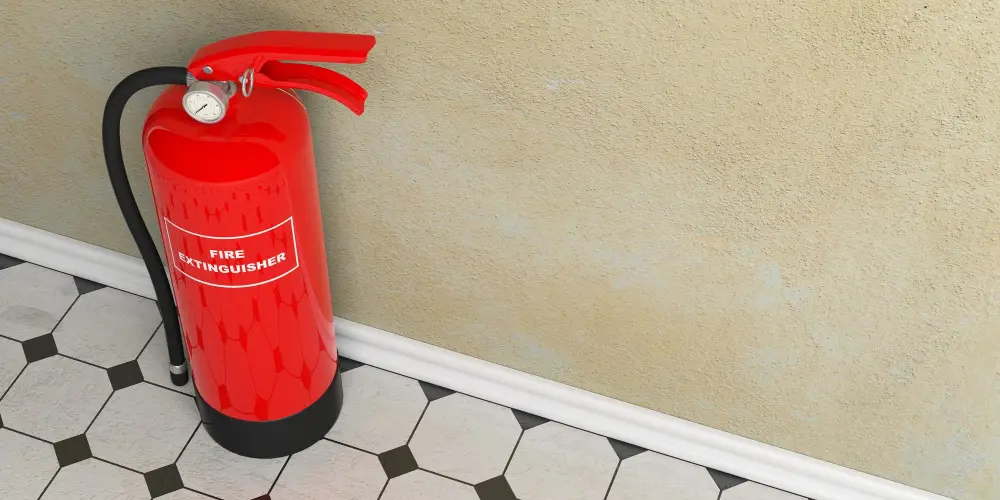
The National Fire Protection Association (NFPA) recommends that you keep the fire extinguisher within 30 feet of any cooking equipment. This means that if you have a large kitchen, you may need more than one fire extinguisher.
It’s also important to consider the type of cooking equipment you have in your kitchen. If you have an oven or stovetop range, make sure the fire extinguisher is located nearby but not too close as they can get hot during use and cause damage or injury if knocked over accidentally.
Be mindful of other heat sources such as toaster ovens or microwaves which can also pose potential hazards for fires starting up unexpectedly.
Proximity to Electrical Equipment

Electrical fires are one of the most common causes of kitchen fires, and having a fire extinguisher nearby can help prevent them from spreading.
It’s important to keep your fire extinguisher away from any electrical equipment that could cause damage or injury if sprayed with water or foam. This includes appliances such as refrigerators, microwaves, and ovens.
Instead, place your fire extinguisher near an exit point in case you need to evacuate quickly. You should also ensure that it is easily accessible so that anyone can grab it quickly during an emergency.
Remember: never use water on an electrical fire! Water conducts electricity and could result in electrocution or make the situation worse. Instead, use a Class C-rated dry chemical powder extinguisher specifically designed for putting out electrically charged fires.
Accessibility and Visibility of Fire Extinguishers
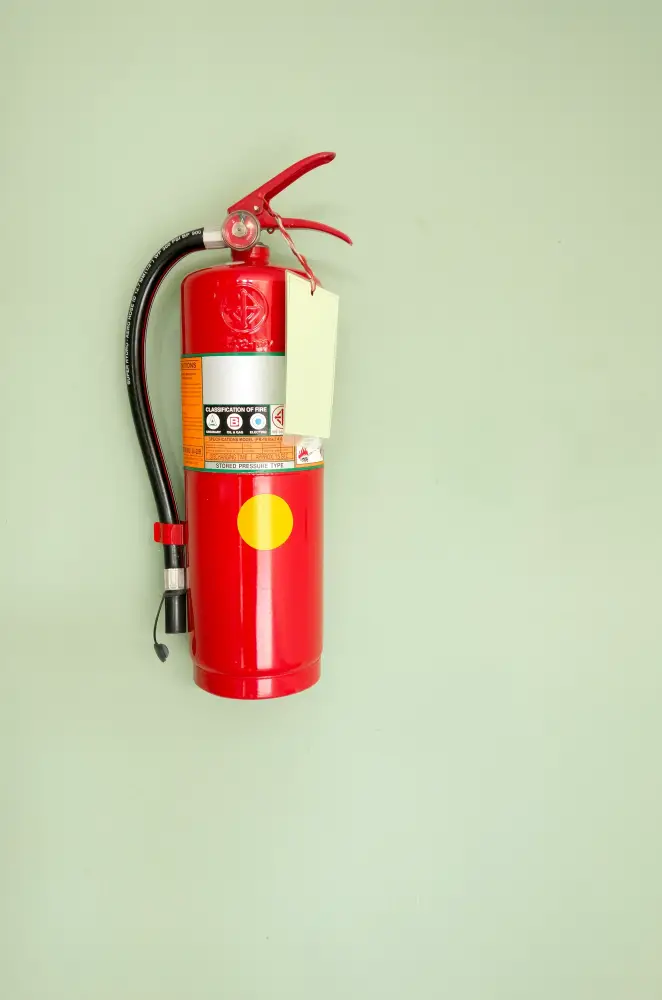
The other half is ensuring that it’s easily accessible and visible in case of an emergency. You don’t want to be fumbling around trying to find your extinguisher while flames are spreading rapidly.
The National Fire Protection Association (NFPA) recommends placing fire extinguishers no more than 75 feet away from any area where a potential hazard may occur, such as cooking appliances or electrical equipment. They should be mounted on brackets or hooks at eye level so that they’re easy to see and grab quickly.
It’s also important not to obstruct the view of your fire extinguisher with any objects like pots, pans or utensils hanging on walls nearby. Make sure there are no obstacles blocking its visibility so you can locate it immediately when needed.
By following these guidelines for accessibility and visibility, you’ll ensure that your kitchen has maximum protection against fires caused by cooking accidents or electrical malfunctions.
Mounting Fire Extinguisher Safely
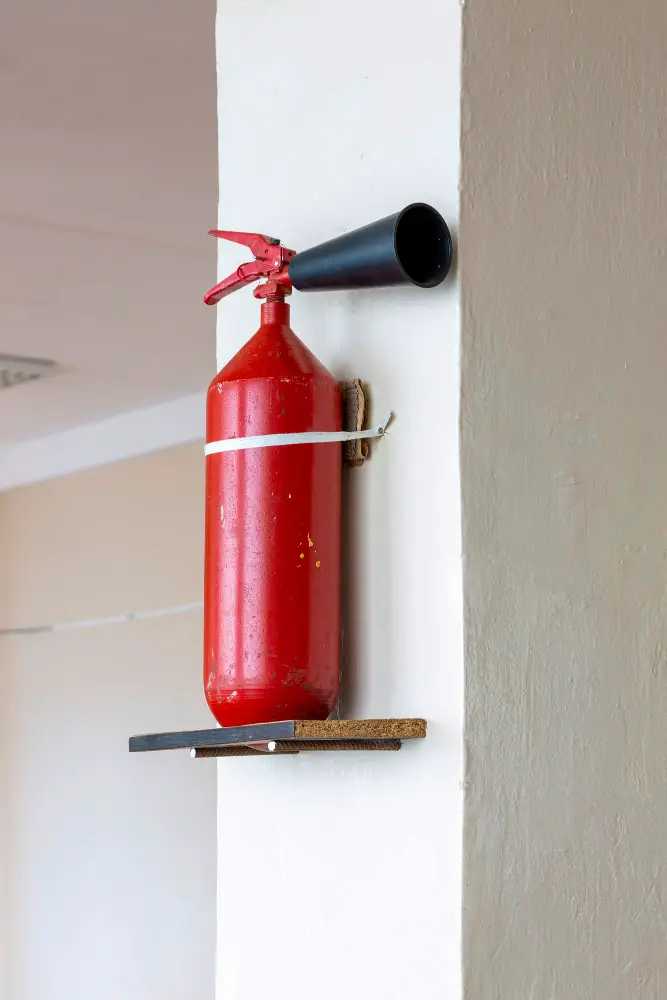
Proper mounting ensures that the extinguisher is secure and easily accessible during an emergency.
When mounting a fire extinguisher in your kitchen, make sure to follow these guidelines:
- Use sturdy brackets or hangers designed specifically for fire extinguishers.
- Mount the bracket or hanger at a height where everyone can reach it easily.
- Make sure that there are no obstructions blocking access to the fire extinguisher.
- Avoid placing anything on top of or near the mounted unit that could obstruct its visibility and accessibility.
Proper Mounting Heights and Distances
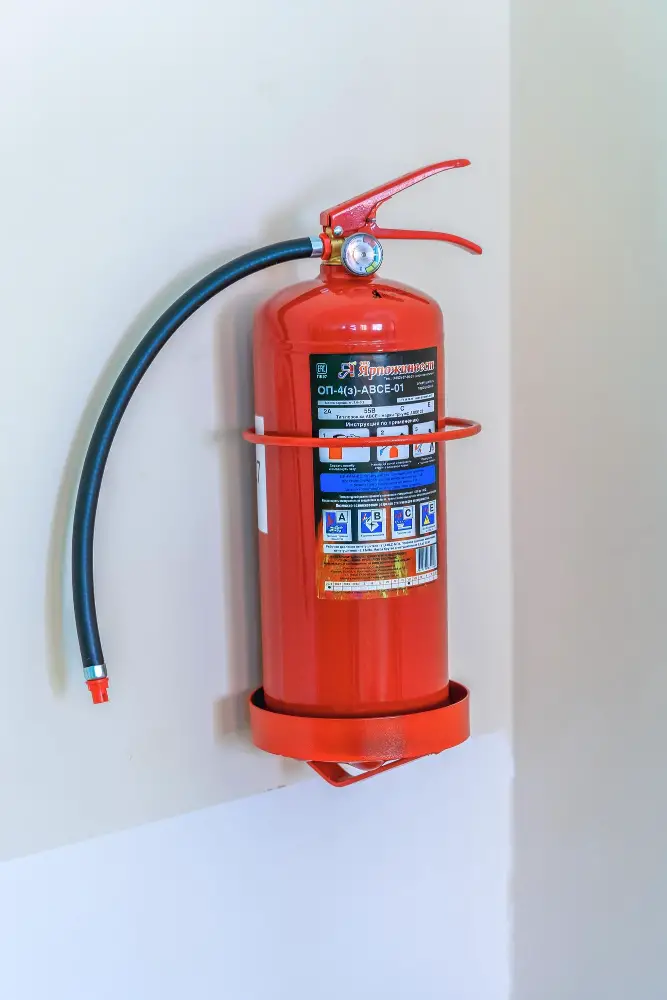
Not only do you need to consider the proximity of the extinguisher to potential fire hazards, but also its height and distance from other objects.
The National Fire Protection Association (NFPA) recommends that fire extinguishers be mounted no higher than five feet off the ground. This ensures that they are easily accessible for all members of your household, including children and those with mobility issues.
In addition to height considerations, it’s important to mount your fire extinguisher at an appropriate distance from potential sources of heat or flames. For example, if you have a gas stove in your kitchen, make sure that the extinguisher is not mounted directly above it as this could cause damage or injury if activated accidentally.
Fire Extinguisher Maintenance
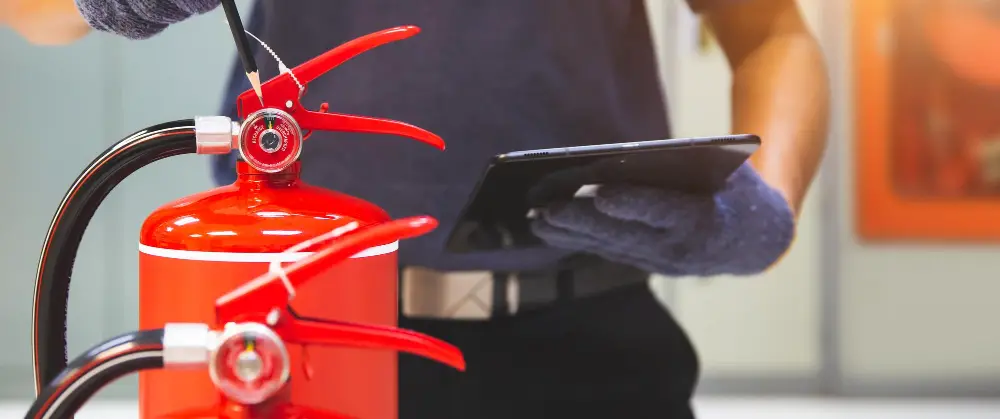
Regular maintenance ensures that the fire extinguisher is always ready for use during an emergency. The National Fire Protection Association (NFPA) recommends monthly inspections of your fire extinguishers to ensure they are in good working condition.
During these inspections, check the pressure gauge on the fire extinguisher and make sure that it’s within its operating range. If there are any signs of damage or corrosion on the cylinder or nozzle, replace them immediately.
It’s also crucial to schedule professional maintenance at least once a year with a licensed technician who can perform more thorough checks and tests on your equipment. They will inspect all parts of your device and recharge or replace any components as necessary.
Inspecting and Maintaining Your Kitchen Fire Extinguisher
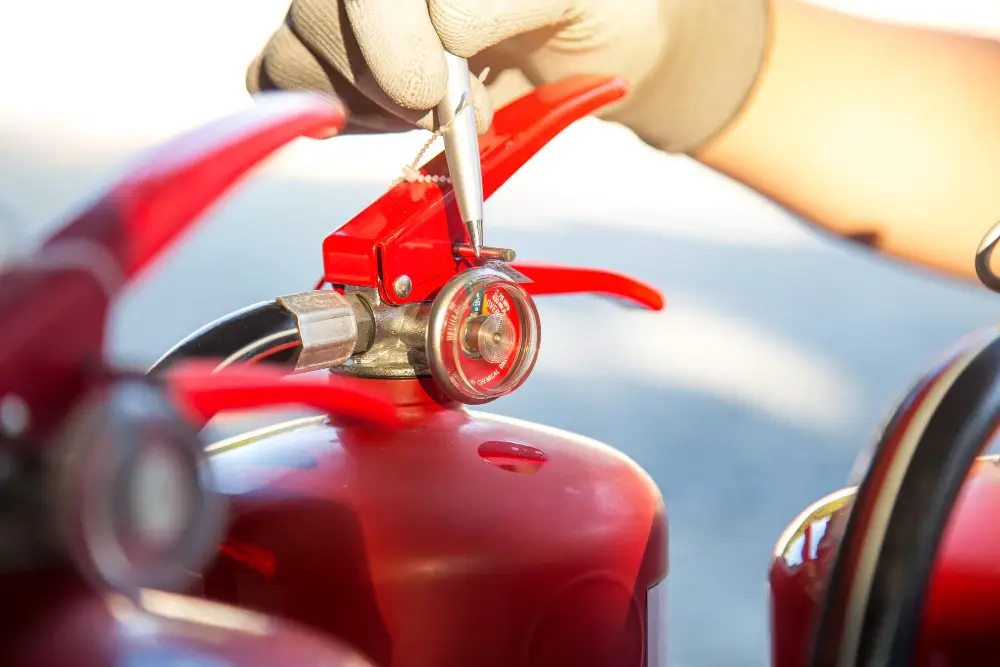
Regular inspections and maintenance are crucial for ensuring that the fire extinguisher will work properly when needed.
To inspect your kitchen fire extinguisher, start by checking its pressure gauge to make sure the needle is within the green zone. If not, replace or recharge it immediately.
Next, check for any visible signs of damage such as dents or rust on the canister and hose.
It’s also essential to keep an eye on expiration dates as most fire extinguishers need replacement every 5-15 years depending on their type and manufacturer specifications.
In addition to regular inspections, proper maintenance of your kitchen fire extinguisher involves keeping it clean from dust accumulation which could clog up its nozzle during use.
Fire Extinguisher Inspection and Replacement
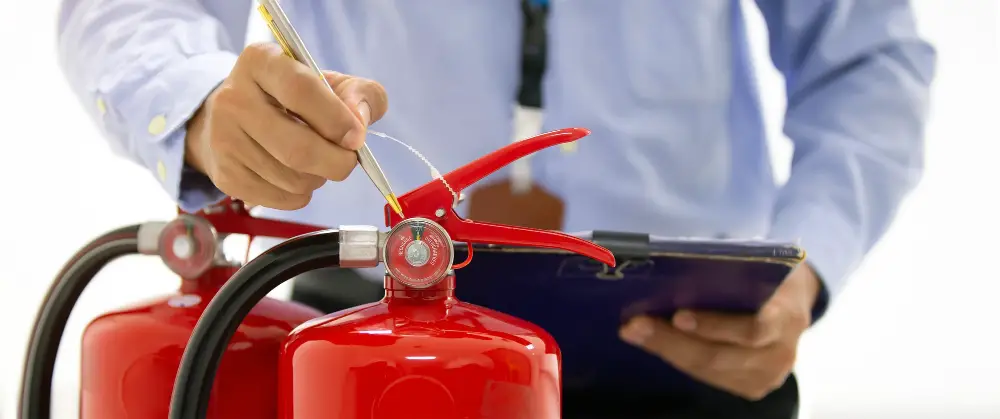
Regular inspection and maintenance of your fire extinguisher are essential for ensuring that it will work when you need it most.
The National Fire Protection Association (NFPA) recommends inspecting your fire extinguishers at least once a month. During these inspections, check the pressure gauge to ensure that the needle is within the green zone, indicating that there is enough pressure inside the canister.
You should also look for any signs of damage or wear and tear on both the canister and hose.
If you notice any issues during your monthly inspections, such as low pressure or damage to either component of the device, replace them immediately. It’s important not only for safety reasons but also because an expired or damaged fire extinguisher won’t be effective in putting out fires.
Fire Safety Laws and Regulations
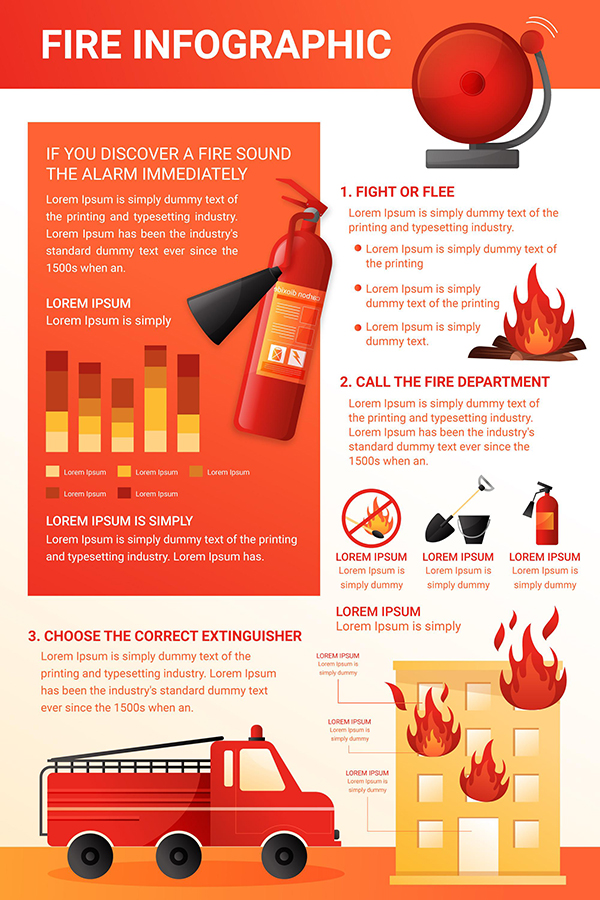
In most states, it’s mandatory for homes to have at least one fire extinguisher on each floor of the house. Commercial kitchens must adhere to strict guidelines set by the National Fire Protection Association (NFPA) regarding fire suppression systems.
It’s important to note that these laws and regulations vary from state-to-state or even city-to-city. Therefore it’s essential always check your local codes before purchasing a new extinguisher or installing a kitchen hood system.
By following these rules and guidelines you can help prevent fires from starting in your kitchen while also ensuring you’re prepared if an emergency does occur.
Kitchen Fire Safety Tips
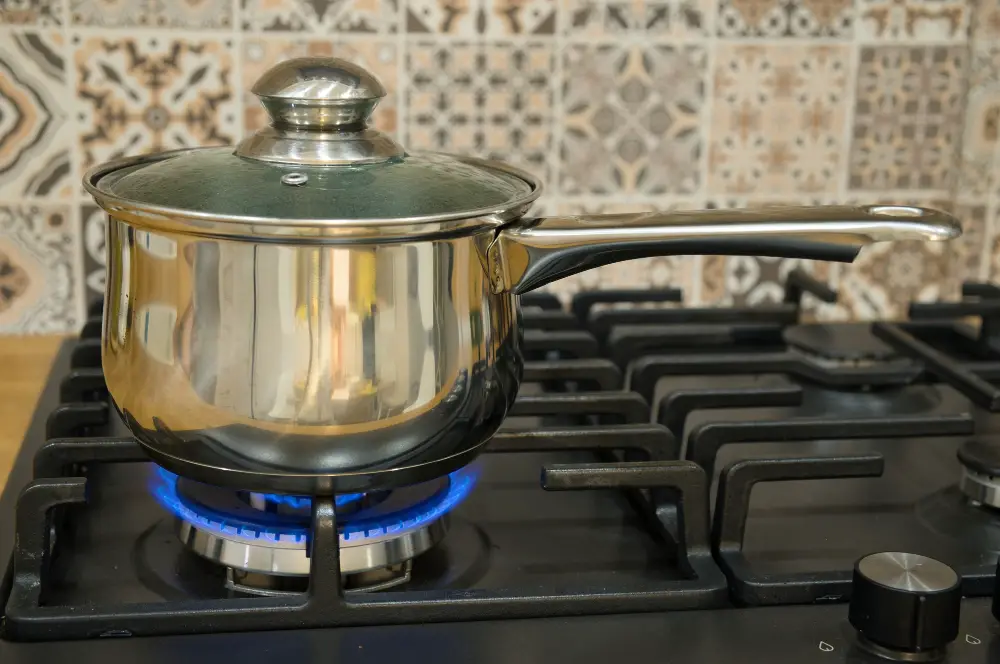
Here are some essential tips to keep in mind:
1. Never leave cooking food unattended: Unattended cooking is the leading cause of kitchen fires.
Always stay close and attentive while cooking.
2. Keep flammable objects away from heat sources: Keep towels, curtains, paper towels or anything that could catch fire away from stovetops and ovens.
3. Clean regularly: Grease buildup on stovetops or inside ovens can ignite quickly if left unchecked for too long.
4. Use caution with electrical appliances: Make sure all electrical appliances have been tested and certified by an authorized body before use; avoid using damaged cords or plugs as they may spark a fire.
5. Install smoke detectors near the kitchen area – Smoke detectors will alert you when there’s smoke coming out of your stove/oven before it turns into flames.
How to Use a Fire Extinguisher

The acronym PASS can help you remember the steps:
- Pull the pin: This will break the tamper seal and allow you to discharge the extinguisher.
- Aim low: Pointing at the base of flames is crucial as this is where most fires start.
- Squeeze handle: Hold onto your extinguisher with both hands and squeeze its handle slowly but firmly.
- Sweep side-to-side motion: Move from side-to-side while aiming at base until all flames are out.
It’s important not only to have an accessible fire extinguisher in your kitchen but also for everyone in your household or workplace knows how to use it correctly during emergencies.
Remember that using a fire extinguisher should be done only when safe, and if there’s any doubt about whether or not it’s safe, evacuate immediately and call 911 for professional assistance.
By following these simple steps on how to use a fire extinguisher effectively, you’ll be better equipped in handling unexpected fires that may occur while cooking up delicious meals in your kitchen!
FAQ
Where should I put fire extinguisher in kitchen?
Place the fire extinguisher near stoves and other cooking appliances in the kitchen, but at a safe distance to ensure easy access during a fire; if you have a small kitchen, mount it on a wall in a nearby closet, provided it is accessible from the kitchen.
Can you keep fire extinguisher under kitchen sink?
No, you should not keep a fire extinguisher under the kitchen sink; instead, place it near a door for easy access on your way out.
Where should you not put a fire extinguisher?
One should not place a fire extinguisher more than 75 ft. from Class A hazards, more than 50 ft. from Class B hazards, within the reach of children, or near heat sources.
Where is the best place to keep a fire extinguisher at home?
The best place to keep a fire extinguisher at home is in a central location on each floor, including the basement if applicable, mounted 4-5 feet from the floor in plain view.
How far away should a fire extinguisher be placed from potential fire hazards in the kitchen?
A fire extinguisher should be placed no more than 30 feet away from potential fire hazards in the kitchen.
Are there specific types of fire extinguishers recommended for kitchen use?
For kitchen use, it is recommended to have a Class K fire extinguisher, designed specifically for extinguishing cooking fires.
What are the guidelines to follow when mounting a fire extinguisher on the wall in a kitchen?
When mounting a fire extinguisher in a kitchen, install it on the wall near an exit, approximately 3.5 to 5 feet above the floor, and away from heat sources to ensure easy accessibility during emergencies.




